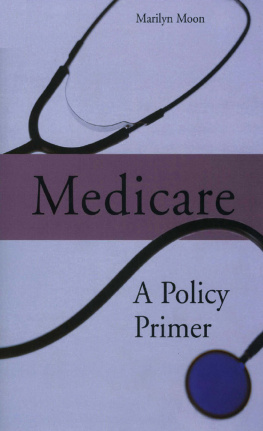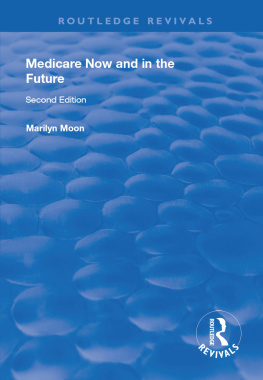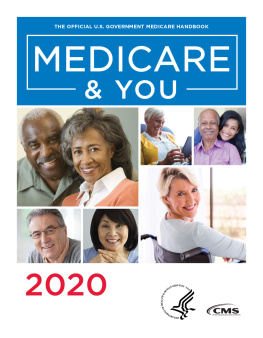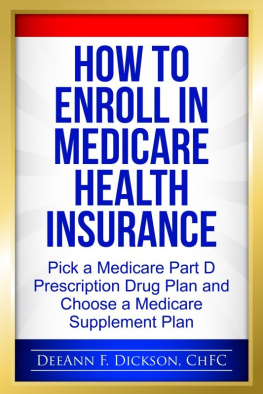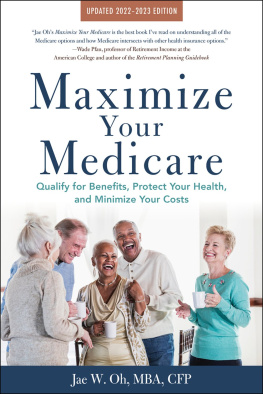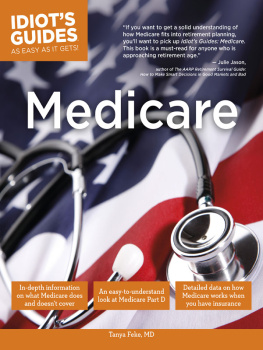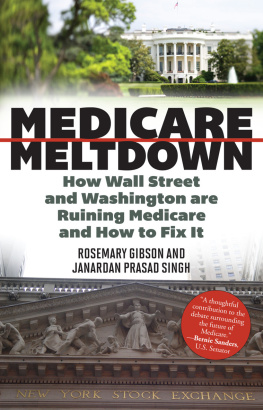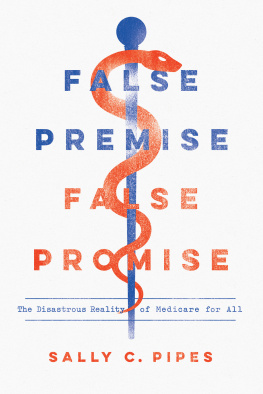Appendix A
THE MECHANICS OF
MEDICARE
T he Medicare program was established by legislation in 1965 as Title XVIII of the Social Security Act and first went into effect on July 1, 1966. In 2004, approximately 41.7 million persons were enrolled in the Medicare program. The program is traditionally divided into two parts: Part A is Hospital Insurance (also referred to as HI) and Part B is Supplementary Medical Insurance (also referred to as SMI). In 1997, Congress added a third part, Part C (previously referred to as the Medicare + Choice program, now Medicare Advantage), which is considered separately from the original fee-for-service Medicare program. In 2003, a prescription drug benefit was added with the passage the Medicare Prescription Drug, Improvement, and Modernization Act (MMA)the largest benefit expansion in the program's history.
ELIGIBILITY
Medicare covers three groups of individuals: (1) persons age 65 and over who are also eligible for any type of Social Security benefit, (2) persons who have been receiving Social Security disability benefits for two years, and (3) insured workers, their spouses, or children with end-stage renal disease (ESRD). Dependents and widows or widowers of retired workers are covered, so long as they are at least age 65. Disability coverage is limited to the covered worker or an adult disabled child of a covered worker. Eligible persons are enrolled in Medicare Part A at no charge.
About 86 percent of Medicare beneficiaries are in the first group noted aboveage 65 or over. Medicare covers over 98 percent of all persons age 65 and over either as a worker or dependent. Anyone over age 65 who is not otherwise eligible may elect to enroll in Medicare by paying an actuarially fair premium. That premium was $375 per month in 2005. These are generally persons who have had little or no labor force attachment or who have immigrated to the United States from other countries and lived here for at least five years. Persons with substantial workforce experienceor persons married to, widowed from, or divorced from such an individualbut who do not have enough working quarters to fully qualify are entitled to a 45 percent reduction in Part A premiums. In 2005, this reduced premium was $206 per month.
People under age 65 make up about 14 percent of the Medicare population. The two-year waiting period for Medicare coverage for disabled persons, coupled with a five-month waiting period for eligibility for Social Security, means that individuals with disabilities do not receive Medicare coverage until 29 months after the onset of the disability. (People with amyotrophic lateral sclerosis [ALS] are waived from the two-year waiting period.) Disabled persons may continue to receive Medicare benefits for up to 36 months after Social Security cash benefits end, so long as they are still disabled. However, disability Medicare benefits may continue during a nine-month period of trial work and for up to 15 months thereafter. Persons disabled as children may also qualify for Medicare once they reach age 18 if their parents were eligible for Social Security. Dependents of disabled beneficiaries are not eligible for Medicare unless they are age 65 or older.
People with end-stage renal disease (ESRD) are covered once they file for benefits and if they are entitled to monthly Social Security benefits or are children or spouses of covered workers. In 2003, there were approximately 97,000 beneficiaries under age 65 with ESRD (and 94,000 age 65 and over) (Boards of Trustees 2004).
All persons enrolled in Part A of Medicare and all persons over age 65 may also elect to join Part B, which requires a monthly premium contribution ($88.50 in 2006) to pay some of the costs of the Part B benefits. (The premium is discussed in more detail under the section for Part B.) When persons enroll in Medicare or turn 65, the Part B premium is automatically deducted from their monthly Social Security check. Enrollees must inform the Social Security Administration if they do not want to enroll in Part B. If an eligible individual elects to delay joining Part B, a penalty (of 10 percent for each year of delay) is added to the premium to discourage individuals from joining only once they become sick.
The generosity of the federal subsidy means that most, but not all beneficiaries, join Part B. Most elderly beneficiaries elect this option, but a slightly smaller percentage of disabled persons do so. In 2004, among beneficiaries with Part A coverage, 96 percent of elderly and 88 percent of disabled beneficiaries elected Part B coverage.
Legislation in the 1980s made Medicare the secondary payer in cases where enrollees age 65 to 69 were still in the labor force and had employer-sponsored employee health insurance. The employee's insurance is liable for the bulk of acute-care expenses, and Medicare pays only for services not covered by this private insurance. This has since been expanded to include all elderly and disabled beneficiaries. Although this provision has been poorly enforced, in theory it limits eligibility for working enrollees. An individual may decline to take private coverage from an employer, for example, if a large premium contribution is required. In that case, the worker would receive full benefits from Medicare.
Yet another dimension of eligibility is the availability of the Medicare savings programs also known as the Medicare/Medicaid buy-in programs, which assist low-income Medicare beneficiaries with out-of-pocket health care costs. Congress enacted the core part of these programsthe Qualified Medicare Beneficiary program (QMB)as part of the Medicare Catastrophic Coverage Act (MCCA) of 1988, and although most of the MCCA was repealed in 1989, the QMB program remained. Under this program, all beneficiaries with incomes below 100 percent of the federal poverty level (FPL) and whose financial resources are under twice the amount specified for Supplemental Security Income are entitled to have the Medicaid program pick up the costs of Medicare's premium, deductibles, and coinsurance.
These protections have been partially expanded into other eligibility categories within the Medicare savings program. The Omnibus Budget Reconciliation Act (OBRA) of 1990 introduced the Specified Low-Income Medicare Beneficiary (SLMB) program that has Medicaid cover Part B premiums for beneficiaries with incomes between 100 and 120 percent of FPL. A third program, the Qualifying Individuals-1 (QI-1) program, introduced in the Balanced Budget Act of 1997, was originally designed to cover Part B premiums for beneficiaries with incomes between 120 and 175 percent of FPL, but has since been leveled at 135 percent. In the QI-1 program, states may limit eligibility based on funding availability.
Although federal law defines these premium and cost-sharing assistance programs, states have discretion in how they implement these programs. Thus far, only a portion of those eligible for QMB or SLMB protections have signed up; many beneficiaries seem to be unaware of the programs.
BENEFITS
Medicare coverage is primarily limited to acute and post-acute care services. In general, Medicare does not cover long-term care services or all preventive medical care (such as routine physicals), but recently has begun covering a select number of screening and preventive services. With some exceptions, before 2006, Medicare's basic benefit package changed little since Medicare's inception.
Part A
Under Part A, hospital coverage is limited to 90 days within a spell of illness, plus a one-time supply of 60 lifetime reserve days that can be used to extend the covered period within one or more spells of illness. The first 60 days of the spell of illness are fully covered (after payment of a deductible). After that, the beneficiary is liable for coinsurance for the next 30 days (a discussion of cost sharing follows). The lifetime reserve days, which would then begin, also require beneficiary cost sharing. A spell of illness begins when the patient receives hospital or extended care services and ends when 60 days have elapsed between such periods of treatment. Thus, a spell of illness is not really related to a particular illness, but rather refers to a period of time elapsing between discharge and readmission, when the next spell begins.
Next page
